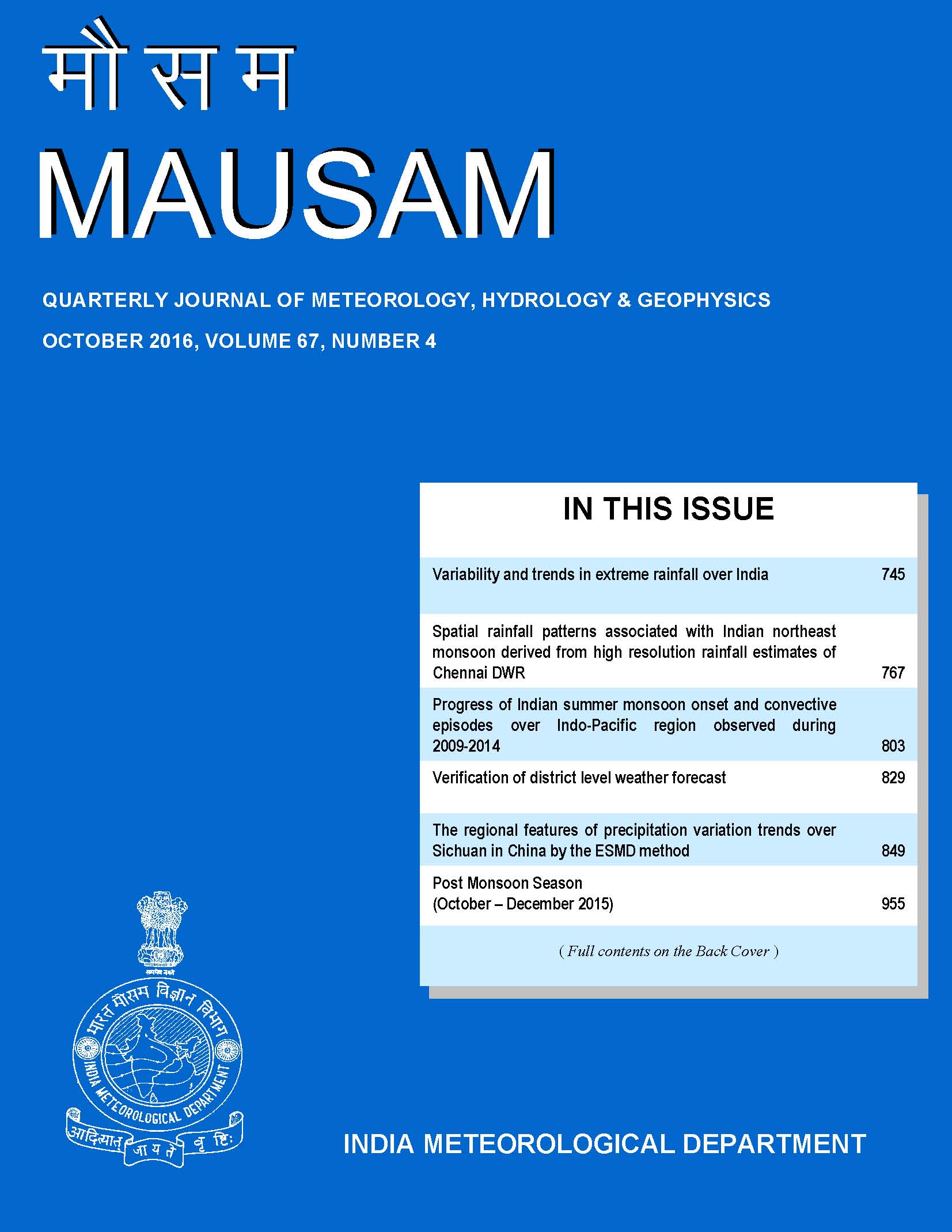The regional features of precipitation variation trends over Sichuan in China by the ESMD method
DOI:
https://doi.org/10.54302/mausam.v67i4.1412Abstract
Based on a precipitation time series from 49 meteorological stations in Sichuan Province during the period from 1961 to 2011, the multi-scale characteristics of precipitation variability are analyzed using the extreme-point symmetric mode decomposition method (ESMD). Regional differences in variation trends and change-points were also preliminarily discussed. The results indicated that in the last 50+ years, the overall precipitation in Sichuan Province has exhibited a significant non-linear downward trend, and its changes have clearly exhibited an inter-annual scale (quasi-3 and quasi-8-year) and interdecadal scale (quasi-13-year). The variance contribution rates of each component demonstrated that the inter-annual change had a strong influence on the overall precipitation change in Sichuan Province, and the reconstructed inter-annual variation trend could describe the fluctuation state of the original precipitation during the study period. The reconstructed interdecadal variability revealed that the climate mode in Sichuan Province had divided into three distinct variation periods with 1973 and 1998 as the boundaries. Furthermore, there were regional differences in the non-linear changes and change-points of precipitation. In addition, in order to study the relations between the changing more or less of rising or decrease and meteorological station’s geographical position (latitude, longitude and elevation) i.e., the Cokriging interpolation technique is applied directly to precipitation variation trend components through ESMD decomposition. At the same time, the results also suggested that the ESMD method can effectively reveal variations in long-term precipitation sequences at different time scales and can be used for the complex diagnosis of non-linear and non-stationary signal changes.
Downloads
Published
How to Cite
Issue
Section
License
Copyright (c) 2021 MAUSAM

This work is licensed under a Creative Commons Attribution-NonCommercial 4.0 International License.
All articles published by MAUSAM are licensed under the Creative Commons Attribution 4.0 International License. This permits anyone.
Anyone is free:
- To Share - to copy, distribute and transmit the work
- To Remix - to adapt the work.
Under the following conditions:
- Share - copy and redistribute the material in any medium or format
- Adapt - remix, transform, and build upon the material for any purpose, even
commercially.



